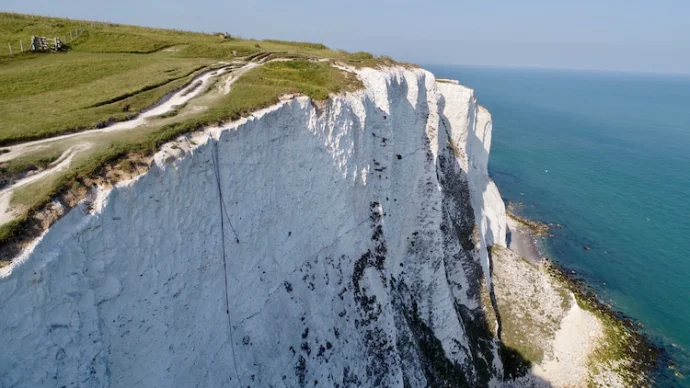
About Lepe Beach
The sand and shingle shore at Lepe and nearby Stone Point was used as a troop embarkation point for D-Day, for soldiers camped in ‘Marshalling Area B’.
History of Lepe beach
To support landing craft and amphibious operations against Europe, Lord Mountbatten ordered the construction of special ‘hards’ around Britain’s south coast to enable the loading of two types of assault vessels, Landing Craft Tank (LCT) and Landing Ship Tanks (LST). At Lepe, the ‘Q’ hard was built in front of Lepe House and the larger ‘Q2’ hard was built at Stanswood Bay, with space for 4 LCT’s.
Lepe and the surrounding area came under the control of the shore station HMS Mastodon, and many hundreds of troops with their equipment, vehicles and ammunition were hidden along the narrow roads and in numerous closed camps hidden in the wooded areas across the New Forest in the build-up to D-Day.
From 31 May 1944 onwards, soldiers made their way down to the coast to embark onto the ships and landing craft that would take them to Normandy – some on the Lepe shore, others at sites to the east or west, notably in Southampton. Vehicles were loaded earlier, but the soldiers themselves embarked only just before D-Day, followed by those who would be landing on subsequent days.
The Lepe shoreline was also a site were parts of the Mulberry Harbours (artificial harbours) were built (including 6 type B2 Phoenix caissons), along with nearby Langstone Harbour and Hayling Island. Once moved across to Normandy after D-Day, these huge concrete structures formed part of the breakwater for the Mulberry Harbours that proved vital to D-Day’s success – allowing vehicles and goods to be unloaded onto the Normandy beaches.
 Watch Now
Watch NowLepe beach today
The Lepe shore area is now part of Lepe Country Park (an ‘Area of Outstanding Natural Beauty’), and remains of the area’s wartime past are still visible, including concrete blocks on the beach (which aided vehicles loading onto landing craft), several ‘dolphins’ that formed part of the pier where landing craft were moored while troops boarded, and a stretch of platforms and slipways where the Mulberry Harbours caissons were built and launched. There is also a memorial to the 4th & 7th Dragoon Guards east of the park at Stanswood Bay.
Today the long stretch of shingle beach is also popular with kite surfers and wind surfers, and the meadows and woodlands in the Park are protected habitats for wildlife, and well worth visiting too.
Getting to Lepe beach
The Lepe shoreline is on the south coast of England, just north of the Isle of Wight. The nearest large town is Southampton, approximately 16 miles away. It’s easiest to reach Lepe by car – drive west down the A33 into the A35, then head south down the A326, until the turn-off along Beaulieu Road (B3054), then follow Exbury Road/Summer Lane to reach Lepe, where a car park is available.
Featured In

10 Places in England to Explore World War Two's History
Experience the sights of wartime England.




















